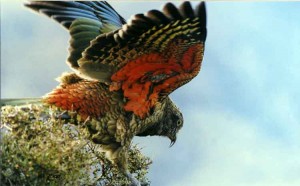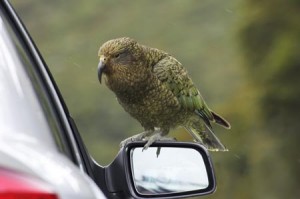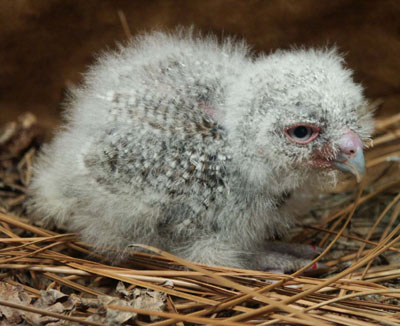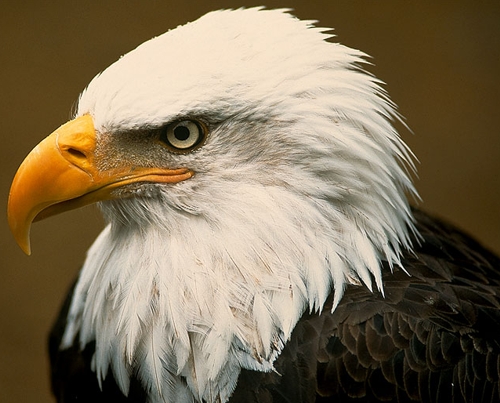Kea
The Kea is a species of parrot endemic to the South Island of New Zealand. The bird has obtained its name from the screeching call “kea” which is used when the bird feels endangered. In the past, it was thought that these parrots kill sheep and the government issued a reward for each bird killed. Although the Kea have never shown aggression towards sheep, 6819 of these birds were killed in 1943 – 1945.
Both the sexes look similar, except for the female being slightly smaller than the male. Keas have olive green plumage, lighter on the chest, while the underwing is light red and the undertail – dark red. These parrots reach a size of up to 46 cm with a wingspan of over 90 cm. With its red eyes and a habit to occasionally feast on carrion, the Kea are thought to be a bad omen, from which probably the myth about the bird eating sheep was born.
In the mountain regions of New Zealand, the Kea wanders areas, searching for food. Being of a very curious nature, the parrots often fly in human houses. Searching for food they can create a great mess or even rip a tourist tent. They’re quite social and live in groups of up to 14 individuals. They’re very energetic fliers, thus they often have to cool themselves in the snow or paddles.
Most of the bird’s diet consists of fruits and berries, as well as seeds, flowers, worms and roots. They also won’t pass the occasional dead animal or even garbage. Keas are known for their high level of intellect – when in captivity they can solve a variety of puzzles, putting pieces in correct order or performing various tasks in order to obtain food. It is no wonder than that the bird often invades houses in search for a delicious meal.
Keas reach sexual maturity at the age of three. The bird most usually chooses a cliff gap for a nest and often uses the same place for multiple years. The nest is constructed from branches, moss and lichens, while the nesting period lasts July through January. The female lays 2-4 eggs and incubates them for 4 weeks. During this time, the male feeds the female and protects the nest. The chicks are fed by both their parents until they learn to fly, which is around 13 days.
Unfortunately, the superstitious myth about Keas being a threat to sheep took its toll on the population of these birds and their numbers were severely harmed in the 1940’s. Reservoirs were created and multiple protection plans were put in action to save these interesting birds afterwards. Currently, Kea is classified as “Vulnerable” by the IUCN list of endangered species. Some estimates, however, put this bird much lower – near the brink of extinction.




